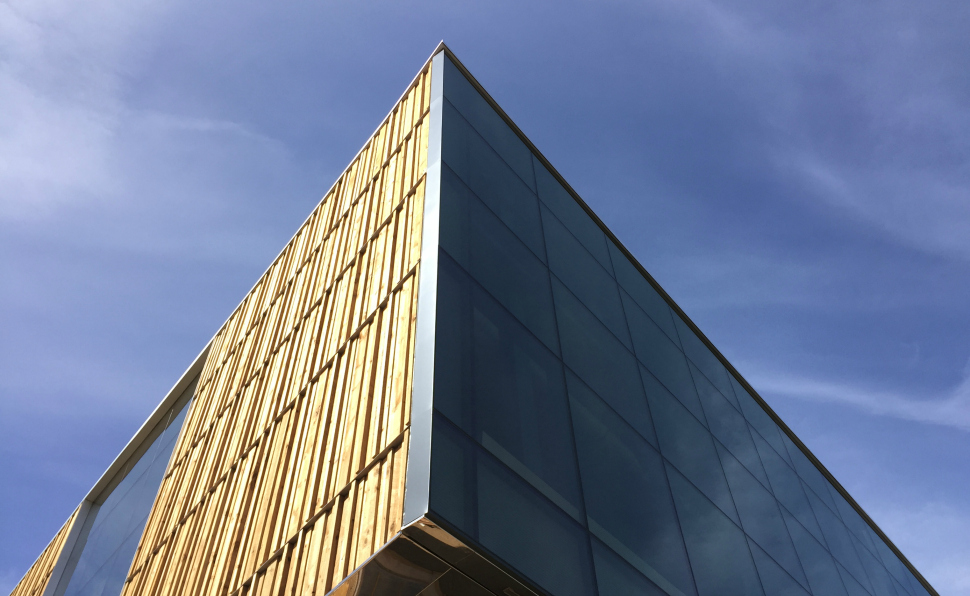Laura Depta, May 13, 2017
When a bird flies toward a window, it can?t always distinguish between reflection and reality. Where a human sees the mirror image of sky, a bird sees only sky.
Bird collisions pose an environmental challenge - one the University of Minnesota and its Bell Museum of Natural History are taking on as the museum moves into a new facility on the St. Paul campus in 2018.
?Birds play incredibly important roles in our ecosystems in terms of how they pollinate, how they prey on pest insects - they?re important indicators for environmental quality,? says George Weiblen, the Bell Museum?s scientific director and curator of plants.
Weiblen says there are reasons to be concerned with bird populations. ?Some are increasing, some are decreasing as we experience global change. We want to be a part of the solution, doing what we can to support these populations and live in balance with them.?
The university exists within the Mississippi Flyway, a major corridor for bird migration. The Bell Museum has long worked with Audubon Minnesota and the Minnesota Ornithologist's Union, organizations that observe birds and collect data, to understand how birds change in the landscape. In fact, the Bell Museum and Audubon Minnesota worked together to study bird collisions in downtown Minneapolis and identify the types of architectural features that are hazardous to birds.
?We have become aware that glass is a challenge for birds,? says Weiblen. ?We have the data to back that up, and so, in designing a new building, what can we do to mitigate that impact??
The Bell Museum enlisted the expertise of architecture and design firm Perkins+Will to help answer that question. One of the major answers came in the form of bird-safe glass. The glass, made in Owatonna, Minnesota and approved by Audubon Minnesota, is installed on all exterior windows of the new facility.
Doug Bergert, project designer with the Minneapolis office of Perkins+Will, explains the method used to make the glass more visible to birds:
?The way we found that does that best is to actually apply a silkscreen, or a ceramic frit pattern onto the glass so birds are actually able to see that surface rather than try to fly through it.?
All exterior glass on the new Bell Museum has one of two types of frit patterns: a denser dotted pattern and a more transparent lined pattern. Both help prevent bird collisions, and they also help shade sunlight at varying degrees. This reduces the need for cooling measures and means the glass is not only bird-safe, but energy efficient as well.
?Often we?ll include a frit on the glass to shade the building,? explains Bergert. ?In the case of the Bell Museum, we were actually able to use that frit to shade the interior of the building and create a visible surface for birds. So, it was a way to use a material in a way that had two functions - creating a comfortable building for people and a friendly building for birds.?

The bird-safe glass is an important environmental measure, but it?s certainly not the only one at the new Bell Museum. Bergert cites exterior lighting and landscaping as other key elements to bird conservation, and the facility at large will feature several sustainable elements, including storm water infiltration and pollinator gardens.
?It?s great that we have a building that can communicate to our visitors not just how we can do better in building and design, but also that, at a university, this is where these new technologies are being developed and tested,? says Weiblen. ?So, the building is also an experiment in evolving new solutions to environmental challenges.?







